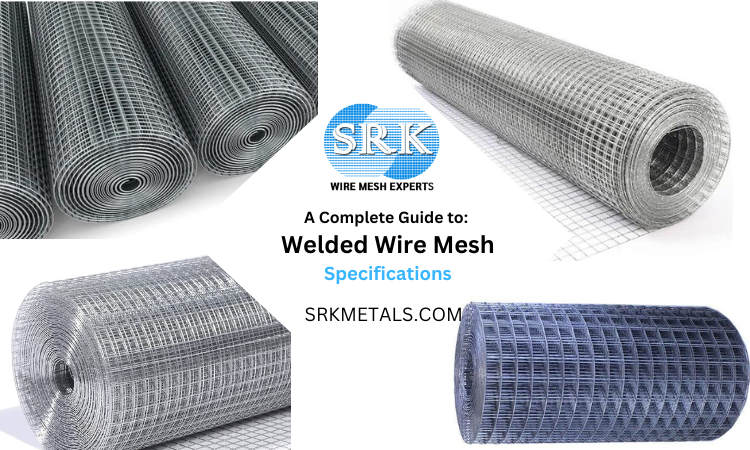Welded wire mesh serves as a crucial thing across numerous industries, famed for its structural integrity and huge-ranging packages. Expertise in its specifications, fashionable sizes, and intricacies is paramount in selecting the precise mesh for diverse purposes.
Welded Wire Mesh Specifications
The specifications of welded wire mesh encompass critical information vital to its production and usage. These specifications are essential in determining the mesh’s suitability for precise programs. Here are the important specifications defining welded wire mesh:
- Length: The duration of the welded wire mesh refers to the horizontal size of the mesh in the path of the wires. It’s also specified in millimeters (mm) or meters (mtr). The mesh sheets or rolls with greater duration weigh more than the shorter ones.
- Width: In contrast to duration, the width of the mesh refers to the vertical dimension across the wire of the mesh sheet. It’s also measured in millimeters (mm) or meters (mtr). It has an effective relationship with the load of the welded wire mesh, with a larger width similar to greater weight.
- Mesh Size: Mesh size refers back to the variety of wires in step with linear inches. Understanding this specification aids in determining the mesh’s density and is important for packages where strength and precision are critical.
- Wire Diameter: The diameter of the wires used in the mesh production significantly affects its energy and durability. Additionally, it is measured in millimeters (mm) or inches (in) and plays a pivotal role in defining the mesh’s load-bearing capacity.
- Mesh number: much like woven wire mesh, the mesh in welded wire mesh denotes the number of openings consistent with linear inches. This specification is important for programs requiring precision.
- Opening size: The measurement of the gaps or spaces between wires within the mesh constitutes the opening length. This specification affects the mesh’s functionality, mainly in sorting or separating materials based on length.
- Weight: It is crucial to measure the load of a mesh by using the various dimensions. The scale encompasses its length, width, diameter, and the range of meshes in an inch. By using a formula, you can effortlessly calculate the weight of a welded wire mesh in line with the requirements of your task.
| Formulae: Wire diameter x wire diameter x mesh number x width x length /2 |
Similarly, you can also use the welded wire mesh weight for trouble-free planning of your upcoming projects to determine which type or form of welded mesh will withstand your project requirements. It proves price assumptions for a set of plans, challenges budgeting, and makes sure of precision on your applications. Our welded wire mesh weight calculator simplifies estimating mesh weight primarily based on particular dimensions.
What are the standard sizes of welded mesh?
Expertise in the standard sizes of welded wire mesh is pivotal for assessing compatibility with numerous projects and industries. Those sizes typically vary based on the supposed applications and enterprise requirements.
How is welded wire mesh certain?
The specification procedure for welded wire mesh entails meticulous attention to elements like opening length, mesh size, wire diameter, welding approach, galvanization, and mesh count. Each specification contributes to the overall excellence and capability of the welded wire mesh.
How do I calculate the wire mesh specification in mm?
For, calculating welded wire mesh specifications in mm entails knowing the wire diameter, welded wire mesh sizes, and occasionally the fabric type. Here’s how you could calculate it:
- Wire Diameter: The degree of the diameter of the wire used inside the mesh. It’s commonly laid out in millimeters (mm). This dimension is essential for determining the wire thickness.
- Mesh Size: Determine the scale of the openings within the mesh. It’s generally targeted by means of a variety of openings in a linear inch. For example, a mesh might be called “4×4” or “6×6,” indicating four or six openings in keeping with linear inches, respectively.
How do I measure the wire mesh specification in inches?
To get the following specifications degree in inches:
- Wire Diameter: Use a caliper or micrometer to measure the wire’s diameter in inches.
- Mesh size: Rely on the number of openings within one inch both horizontally and vertically to determine the mesh size in inches.
What is included in the welded wire mesh specification chart?
A welded wire mesh specification chart generally consists of:
- Wire Diameter Range: The variety of diameters available for the wires used in the mesh.
- Mesh size: Specifications of the mesh in terms of the variety of openings in line with linear inches.
- Material: Specifies the fabric used for the wires (e.g., chrome steel, galvanized metal).
- Mesh Sheet: Dimensions of the mesh sheets (length x width).
- Coating or Finish: If the mesh has a specific coating or finish applied to it.
Usually, seek advice from specific manufacturer specifications or charts for accurate information when operating with welded wire mesh, as they might vary between producers and kinds of mesh.
Conclusion
In conclusion, welded wire mesh specifications encapsulate a wide array of critical parameters vital for its overall performance in diverse applications. information, those specifications empower selection-making, making sure the most suitable usage and efficiency across industries.
For dependable welded wire mesh solutions, SRK Metals stands as a dependent manufacturer and dealer. Our range of welded wire mesh products, available in various sizes and specifications, guarantees exceptional electricity and reliability for your initiatives. Contact SRK Metals nowadays to find out about our excellence in welded wire mesh solutions tailor-made to your precise wishes.

